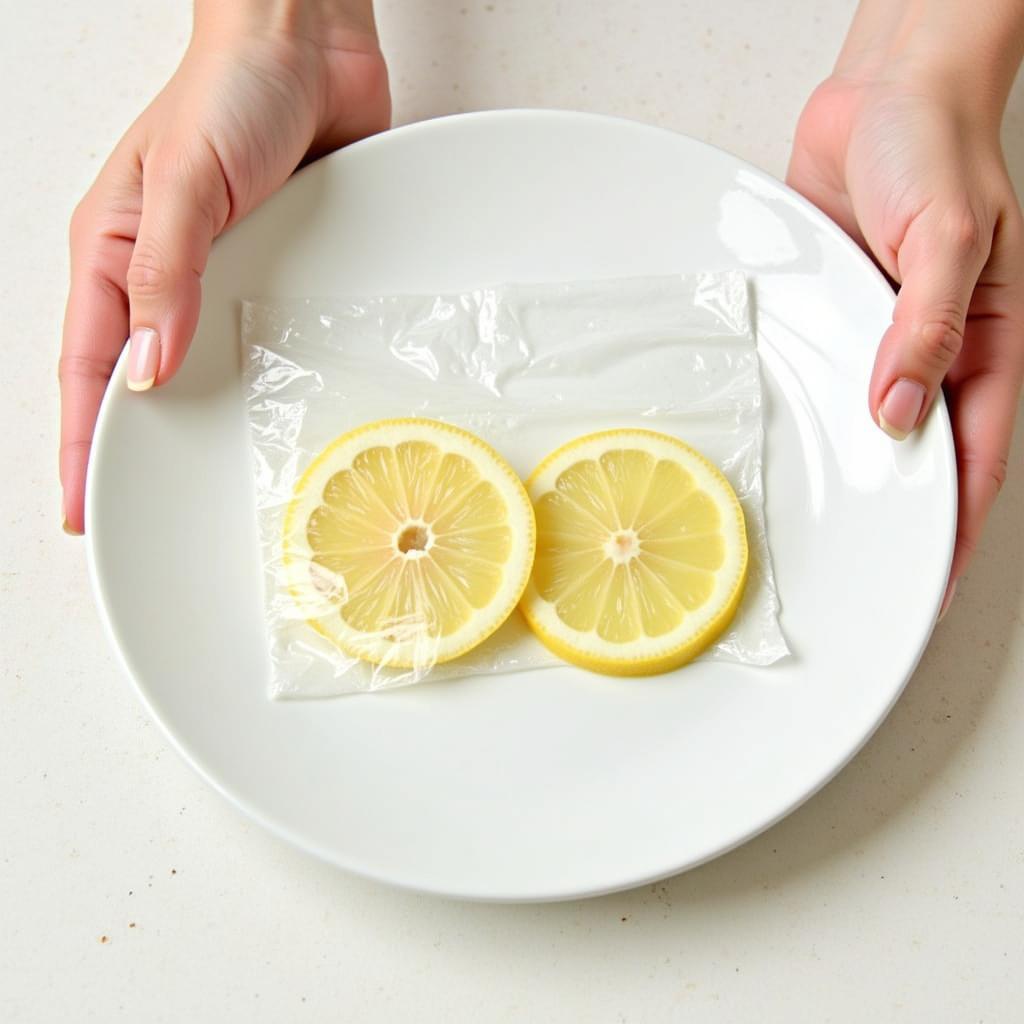Ensuring your pottery glaze is food safe is paramount. Whether you’re a seasoned ceramicist or a beginner, understanding the intricacies of food-safe glazes is crucial for creating functional and beautiful pieces you can confidently use at mealtimes. This guide will delve into everything you need to know about Food Safe Glaze For Pottery, from choosing the right materials to testing your finished pieces.
Understanding Food Safe Glaze
 Food Safe Glaze Basics: Understanding the Essentials for Safe and Beautiful Ceramics
Food Safe Glaze Basics: Understanding the Essentials for Safe and Beautiful Ceramics
So, what exactly makes a glaze food safe? A food safe glaze is one that doesn’t leach harmful chemicals, like lead or cadmium, into food. This is particularly important with acidic foods, which can react with certain glazes. Choosing the right ingredients and firing them at the correct temperature is key. Many commercially available glazes are labeled as food safe, simplifying the process. However, even with these glazes, it’s essential to follow the manufacturer’s instructions carefully to ensure safety.
Don’t feel limited to pre-made glazes! food safe ceramic glaze offers a wealth of information for crafting your own, allowing for ultimate control over ingredients. It’s a journey of discovery and a chance to develop your unique style.
Testing for Food Safety
 Testing Methods for Food Safe Glaze on Pottery
Testing Methods for Food Safe Glaze on Pottery
How can you be certain your glaze is truly food safe? There are a few simple tests you can perform. The “lemon test” involves placing a cut lemon on the glazed surface, covering it with plastic wrap, and letting it sit for 24 hours. If the glaze becomes dull or pitted, it’s not food safe. Another option is to send a sample to a lab for professional testing, especially if you’re working with homemade glazes. This offers peace of mind, guaranteeing your creations are safe for everyday use. Remember, is underglaze food safe? Underglazes can add a beautiful layer of color but require a food safe clear glaze over them to be truly food safe.
Looking for food-safe clay options? food safe clay provides helpful insights and recommendations to ensure every aspect of your ceramic piece is safe for food contact.
Choosing the Right Materials
 Choosing Food-Safe Glaze Materials for Pottery
Choosing Food-Safe Glaze Materials for Pottery
Selecting the right materials is the foundation of food safe glaze for pottery. Opt for pre-mixed food-safe glazes from reputable suppliers, ensuring they are explicitly labeled as such. If you’re venturing into making your own glazes, thorough research is essential. Avoid any materials containing lead or cadmium. Look for materials that have been tested and certified for food safety. This is where a resource like paint for ceramics food safe can prove invaluable.
Firing Your Pottery Correctly
Firing your pottery at the correct temperature is crucial for ensuring your food safe glaze for pottery performs as intended. Underfiring can result in a porous glaze that can leach chemicals, while overfiring can damage the glaze or the pottery itself. Always follow the manufacturer’s instructions for both the clay and the glaze you’re using. Temperature variations can significantly impact the final outcome, so a precise firing process is essential. Even if using food safe glaze no kiln, understanding the curing process and ensuring proper application is key for achieving food safety.
Conclusion
Creating beautiful and functional pottery with food safe glaze is a rewarding experience. By following these guidelines, you can confidently create pieces you can enjoy using every day. Remember, careful material selection, proper firing techniques, and thorough testing are the keys to ensuring your pottery is both beautiful and safe for food use.
FAQ
-
What is the easiest way to test if a glaze is food safe? The lemon test is a quick and accessible method.
-
Are all commercially available glazes food safe? No, always check the label for confirmation.
-
Can I make my own food-safe glaze? Yes, but thorough research and testing are essential.
-
What happens if I underfire my pottery? The glaze might be porous and leach chemicals.
-
Where can I find food-safe glaze materials? Reputable ceramic suppliers are your best bet.
-
How important is the firing temperature for food safety? It’s crucial; follow manufacturer instructions closely.
-
Are there non-kiln fired food safe glaze options? Yes, but they require specific curing processes.
Common Scenarios and Questions:
- Crazing in the glaze after firing: This could indicate incompatibility between the clay and glaze or incorrect firing.
- Dullness after the lemon test: The glaze likely contains leachable elements and is not food safe.
- Finding food-safe glazes for specific projects: Research online forums and consult ceramic suppliers for recommendations.
Further Exploration:
For more information, you can explore other articles on our website related to specific glaze types, DIY glaze recipes, and advanced testing methods.
Contact Us
For any assistance regarding food-safe glazes or other pottery related queries, contact us at Phone: 02437655121, Email: minacones@gmail.com, or visit us at 3PGH+8R9, ĐT70A, thôn Trung, Bắc Từ Liêm, Hà Nội, Việt Nam. Our customer service team is available 24/7.